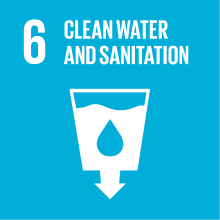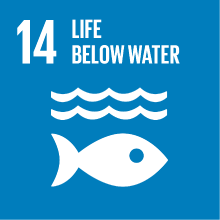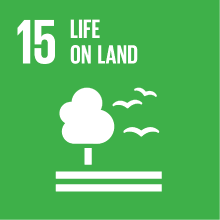ENVIRONMENTAL RISK ANALYSIS AND MANAGEMENT
- Academic year
- 2025/2026 Syllabus of previous years
- Official course title
- ANALISI E GESTIONE DEL RISCHIO AMBIENTALE ED ESERCITAZIONI
- Course code
- CT0587 (AF:575236 AR:322489)
- Teaching language
- Italian
- Modality
- On campus classes
- ECTS credits
- 6
- Degree level
- Bachelor's Degree Programme
- Academic Discipline
- CHIM/12
- Period
- 2nd Semester
- Course year
- 3
- Where
- VENEZIA
- Moodle
- Go to Moodle page
Contribution of the course to the overall degree programme goals
Expected learning outcomes
The student will acquire knowledge and understanding: a) of the physical and chemical principles to which chemical compounds are subjected in environmental matrices; b) the relationships between living organisms and their environment; c) risk analysis for human health and ecosystems; d) the recent evolution of environmental policy, with particular attention to the evolution of the European policy framework in the field of environmental management.
Ability to apply knowledge and understanding
The student will be able to: a) understand the origin, distribution and fate of chemical compounds in environmental matrices; b) apply the acquired knowledge to evaluate the environmental quality of the different matrices in environments subject to different degrees of anthropization; c) organize and initiate processes of auditing and environmental management, both in the company and in local and regional authorities.
Autonomy of judgment
Students demonstrate that they have acquired independent judgment on problems related to environmental risks, be able to assess the quality of the environmental data associated with them, know how to identify the most appropriate analysis tools to support a risk assessment for human health and ecological systems.
Communication skills
The student demonstrates the ability to develop communication skills using the basic linguistic terminology in all the processes of application and communication of the acquired knowledge. Therefore, the ability to: communicate verbally and in writing to the public with language properties both in Italian and in English; support scientific discussions with various interlocutors of various cultural backgrounds; present oral and written technical reports in scientific and institutional contexts.
Learning ability
The student demonstrates having acquired the scientific method as a work tool, be familiar with the research of scientific information, have the capacity for continuous training for updating in the environmental sector, also through the consultation of scientific bibliography also in English.
Pre-requirements
Contents
Introduction to Environmental Risk Assessment: definitions, conceptual frameworks, procedures and methodologies for different assessment levels (screening, site-specific and at regional scale).
Software for Environmental Risk Assessment and their application to different environmental problems (contaminated sites, freshwaters and groundwaters quality).
Introduction to environmental auditing: Environmental Management Systems and reference legislation (ISO 14001 and EMAS regulation) for their auditing.
The course includes two specific exercises: one on the application of a software for the human health risk analysis for the remediation of contaminated sites (3 hours) and one on the application of GIS techniques and tools (18 hours). Both exercises will use concrete case studies.
Referral texts
Slides sent by the teacher and lecture notes.
Optional:
Metodologie di valutazione ambientale, 2006. A cura di Moriani G., Ostoich M., Del Sole E.. Franco Angeli editore.
Manuale APAT sui “Criteri metodologici per l'applicazione dell'analisi assoluta di rischio ai siti contaminati” (https://www.isprambiente.gov.it/files/temi/siti-contaminati-02marzo08.pdf )
http://ec.europa.eu/environment/emas/
http://www.iso.org/iso/home/standards/management-standards/iso14000.htm
Assessment methods
The class exercise conducted by the students during the course will also be considered (20 % of final score).
For students not attending the course the examination procedures will be agreed with the teacher.
Type of exam
Grading scale
26-27: good knowledge of the topics covered in class; good ability to collect and/or interpret data, formulating independent judgments; familiarity with technical terminology;
24-25: not always in-depth knowledge of the topics covered in class; fair ability to collect and/or interpret data, formulating independent judgments; not always correct use of technical terminology;
22-23: often superficial knowledge of the topics covered in class; sufficient ability to collect and/or interpret data, formulating independent judgments; poor use of appropriate technical terminology;
18-21: knowledge of the topics covered in class is sometimes incomplete; limited ability to collect and/or interpret data, formulating independent judgments; little use of technical terminology.
Teaching methods
Further information
Accommodations and Support Services for students with disabilities or specific learning disabilities: Ca' Foscari applies Italian law (Law 17/1999; Law 170/2010) to support and accommodation services available to students with disabilities or specific learning disabilities. If you have a motor, visual, hearing, or other disability (Law 17/1999) or a specific learning disability (Law 170/2010) and require support (classroom assistance, technological aids for exams or individualized exams, accessible materials, note-taking, specialized study support, interpreters, or other assistance), please contact the Disability and DSA Office: disabilita@unive.it.
2030 Agenda for Sustainable Development Goals
This subject deals with topics related to the macro-area "Natural capital and environmental quality" and contributes to the achievement of one or more goals of U. N. Agenda for Sustainable Development



